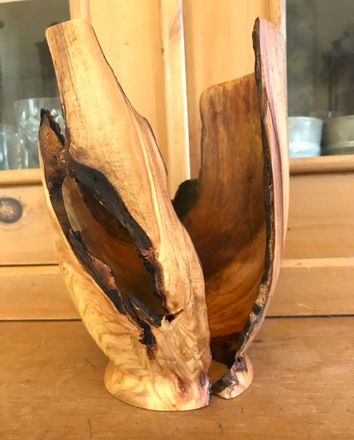
ABOUT

MY APPROACH

MATERIALS, FORMS & FINISHES
I use mostly
British native or naturalised hardwood that has grown locally, so each piece
has a special connection with the landscape it comes from. Much of it is dead or fallen timber from the wild or has been given by tree surgeons and might otherwise have been scrapped or
burned.
The characteristics of the wood are paramount.
Seasoned wood is more stable, whilst ‘green’ or freshly cut timber will crack
and twist in the most exciting manner as it dries.
Mine are pieces which are deceptively simple in form but which take time and patience to create. The object of the exercise is to bring out something that is already there – latent but just discernible. Sometimes an idea will emerge as I’m working. At other times I will recreate shapes suggested by pottery, be it prehistoric, classical or ancient Chinese or Japanese. Gradually, these blend with the wood's natural features and there emerges a unique intrinsic beauty that is a pleasure to handle as well as look at.
I don’t like to suffocate the wood with layer upon layer of synthetic varnish. Instead, I prefer a couple of light applications of natural wax beeswax. This allows the wood to breathe and continue to develop; in effect, to continue to have a life of its own and exude its unique spirit.
That life, I would like to believe, enhances ours. And that spirit combines harmoniously with our own.
